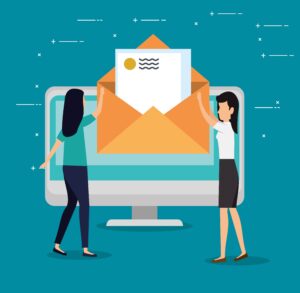Email marketing remains a crucial strategy for reaching legal professionals, including attorneys, law firms, and legal consultants. However, legal professionals are inundated with emails daily, making it challenging to capture their attention and increase open rates. If your emails go unread, your marketing efforts won’t generate the desired results.
To ensure that your emails stand out and resonate with your target audience, you must refine your approach. Here’s a comprehensive guide to improving your open rates when emailing legal professionals.
1. Optimize Your Subject Line
The subject line is the first thing legal professionals see, and it significantly impacts whether they open your email. A well-crafted subject line should be:
- Concise and clear: Legal professionals are busy; keep it short and to the point (ideally under 50 characters).
- Relevant: Ensure the subject line aligns with their interests or pain points.
- Personalized: Use their name or mention their firm for a more tailored approach.
- Urgent but not clickbait: Avoid misleading phrases that might disappoint the recipient upon opening the email.
- Avoid spam triggers: Words like “Free,” “Discount,” and excessive exclamation points can trigger spam filters.
2. Segment Your Email List
Not all legal professionals have the same needs. Segmenting your attorneys email list helps tailor your messages to different groups, ensuring higher relevance and engagement. Consider segmenting by:
- Practice area: Family law, corporate law, intellectual property, criminal defense, etc.
- Firm size: Solo practitioners vs. large law firms.
- Experience level: New lawyers vs. seasoned professionals.
- Geographical location: Compliance laws vary by region.
- Engagement level: Active subscribers vs. inactive ones.
A segmented approach increases open rates because recipients receive content specifically relevant to them.
3. Personalize Your Emails
Legal professionals value authenticity and personalization. Instead of sending generic mass emails, personalize the content based on:
- Recipient’s name: “Hi [First Name],”
- Firm name: Mention their law firm to make the email feel exclusive.
- Previous interactions: Reference past emails, website visits, or downloads.
- Industry-specific challenges: Address pain points relevant to their legal niche.
Personalization helps establish a connection and demonstrates that you understand their needs.
4. Send Emails at the Right Time
Timing is crucial when emailing legal professionals. They have hectic schedules, so sending emails when they are most likely to check their inbox is essential.
Best Times to Send Emails:
- Early mornings (7-9 AM): Before their workday begins.
- Midweek (Tuesday to Thursday): Avoid Mondays (busy start of the week) and Fridays (pre-weekend wind-down).
- Late afternoons (4-6 PM): When they review emails before leaving work.
Test different sending times and analyze open rates to determine what works best for your audience.
5. Ensure Mobile Optimization
A significant portion of professionals check emails on their smartphones. If your emails are not mobile-friendly, you risk losing engagement.
Mobile Optimization Tips:
- Use a responsive design that adjusts to different screen sizes.
- Keep subject lines and pre-headers short.
- Use a clear, single-column format.
- Ensure CTA buttons are large enough for easy tapping.
6. Craft Engaging Preview Text
The preview text (or pre-header) is the snippet that appears next to the subject line in the inbox. Use this space to provide additional context and entice the recipient to open the email.
Example:
- Subject: “Improve Your Legal Practice Efficiency”
- Preview Text: “Discover tools top law firms use to streamline operations and save time.”
Ensure the preview text complements the subject line and adds value.
7. Write Compelling Email Copy
Once a legal professional opens your email, the content must keep them engaged. Follow these guidelines:
- Start with a strong opening: Get to the point quickly.
- Keep it brief: Lawyers don’t have time for long-winded emails.
- Use bullet points: Highlight key benefits for easy scanning.
- Include a clear CTA (Call to Action): Encourage a specific action (e.g., “Download the Legal Report” or “Schedule a Free Consultation”).
8. Avoid Spam Filters
If your emails land in spam folders, your open rates will suffer. To improve deliverability:
- Avoid excessive capital letters and punctuation (e.g., “LIMITED TIME OFFER!!!”)
- Use a reputable email service provider.
- Authenticate your domain with SPF, DKIM, and DMARC.
- Include an easy unsubscribe option (to prevent being marked as spam).
- Maintain a clean email list by removing inactive subscribers.
9. Leverage A/B Testing
A/B testing (split testing) involves sending two variations of an email to determine which performs better. Test elements like:
- Subject lines
- Send times
- Personalization approaches
- Email length
- CTA placement
Use the data to refine your strategy and improve open rates over time.
10. Follow Up Strategically
Legal professionals are busy, and sometimes they miss emails. A well-timed follow-up can increase open rates. Best practices for follow-ups include:
- Wait at least 3-5 days before following up.
- Change the subject line to spark interest.
- Keep the email short and friendly.
- Offer additional value (e.g., a relevant article or industry insight).
Example follow-up:
Subject: “Did You Find This Legal Resource Helpful?”
Email: “Hi [First Name], I wanted to follow up and ensure you saw the resource we shared. Let me know if you have any questions or need additional insights.”
11. Use Social Proof and Authority
Legal professionals trust peer recommendations and authoritative sources. Enhance your emails with:
- Case studies: Show how similar law firms benefited from your service.
- Testimonials: Highlight feedback from respected legal professionals.
- Industry recognitions: Mention any awards or partnerships.
This builds credibility and encourages recipients to engage with your email.
12. Monitor and Improve with Analytics
Track key metrics to measure success and identify areas for improvement:
- Open rates: Percentage of recipients who opened the email.
- Click-through rates (CTR): How many clicked on links within the email.
- Bounce rates: Percentage of emails not delivered.
- Unsubscribe rates: Indicates if the content is not resonating.
Use insights from analytics to optimize future campaigns.
Conclusion
Improving email open rates when targeting legal professionals requires a strategic approach. By optimizing subject lines, segmenting lists, personalizing content, and ensuring mobile-friendliness, you can significantly enhance engagement. Additionally, testing and refining your approach based on analytics will help you consistently improve performance.
By implementing these best practices, your emails will stand out in the crowded inboxes of legal professionals, ultimately leading to higher engagement, better relationships, and increased conversions.



